We aren't guaranteed much as adults, but if there's one thing we can count on, it's that our bodies change as we get older. For men, that's especially true. One day you're lifting heavy weights and nailing your cardio regimen without having to stretch before or after. And then, in what seems like the blink of an eye, you start to slow down a little. You begin to notice aches and pains in places that weren't there before. You can't just go out for a night on the town, imbibe until your heart is content, and expect to wake up refreshed.
And while headaches and achy joints can be treated with ice and anti-inflammatory medicine, other aspects of aging aren't as easy to treat. You've probably guessed at this point what we're talking about: erectile dysfunction, or ED for short. When brought up to most men, those are two words that cause a guttural reaction of fear and trepidation.
While just about every man fears ED, millions suffer from it - almost 10% of the male population between the ages of 40 and 70. So, if you're beginning to have trouble performing in the heat of the moment, you're definitely not alone. You may be experiencing symptoms like:

Trouble Achieving an Erection

Trouble Maintaining an Erection

Lower Libido

Less Sexual Pleasure

Premature Ejaculation

Inability to Achieve Orgasm
However, at Elite Healthcare Physical Medicine, we understand that stats won't do anything to address the stress and anxiety you're facing in relation to erectile dysfunction. You need a viable solution - a science-backed treatment that doesn't require strange pills or invasive surgeries. As a fully integrated multidisciplinary clinic in Mount Pleasant, we have what you've been searching for: softwave therapy for ED in John's Island, SC.

To fully grasp the benefits of using soft wave therapy for erectile dysfunction, you must first understand what causes ED to begin with. Put simply, erectile dysfunction is the inability to get an erection and keep it throughout sexual intercourse. You should know that it's not uncommon if you have erection trouble. However, if your inability to "get it up" becomes a common occurrence, you may be suffering from ED.
Erectile dysfunction doesn't just affect your penis - it also affects your wellbeing and relationships. It can lower your confidence, cause a large amount of stress that affects your ability to work, and may even cause contention with your partner.
You hear it all the time - as men get older, they often lose the ability to get erect. But why? As men age, the blood vessels in their penis start to fill up with micro-plaques, causing them to deteriorate. When these blood vessels deteriorate, it's more difficult for them to have steady blood flow. And that's the key to ED - having the constant blood flow to get and keep an erection. That's where the science-backed effectiveness of Softwave therapy swoops in to save the day.
Shockwave technology has been around for decades. It has been used at the highest-level research and medical facilities like the Cleveland Clinic and Memorial Sloan Kettering. However, Softwave therapy is a more refined, effective way to treat erectile dysfunction and also advance tissue healing.
Softwave therapy works by using electrohydraulic spark gap technology at its core. Its innovative design features a parabolic reflector applicator that produces very effective, low-intensity shock waves that are unfocused. Elite Healthcare Physical Medicine's Softwave applicator spreads energy to a large area of both superficial and deep tissue, creating a biological response that kickstarts your body's natural healing process.
For men suffering from ED, it is a revolutionary breakthrough treatment that doesn't require harmful surgeries or side effects from pills. In fact, it has been FDA approved for many uses, including improved blood flow, which is often the root cause of erectile dysfunction.
Book Appointment

Unlike some more traditional treatment options, Softwave therapy gets right to the crux of the ED issue. It uses shock wave technology on a cellular level, helping to naturally heal body parts, like the penis. Some of the most common benefits of Softwave therapy include:
Additionally, Softwave treatments don't require much prep, don't have any sketchy side effects, don't require any numbing agents or anesthesia, and result in little-to-no recovery time. Sound too good to be true? Contact Elite Healthcare Physical Medicine today to learn just how effective Softwave therapy is for our patients!

Softwave therapy works by using efficient, effective shock waves that cause biological regeneration processes that heal your body using its own healing factors. It works like this: Softwaves are created via a high-energy electrical discharge in water. The voltage is discharged between the plus and minus tips of an electrode. The spark gap or arching causes an equalization of voltage between the opposing tips of the electrode, which causes a hot plasma bubble. This bubble explodes and distributes in every direction, compresses the surrounding water, and generates a pressure > 10 MPa within nanoseconds.
To sum up, Softwave therapy uses low-intensity, unfocused energy that is delivered by a reflector in parallel waves. These waves help open up the blood vessels in your penis, allowing more blood to flow. At Elite Healthcare Physical Medicine, our team of expert physicians will develop a personalized Softwave therapy plan based on your body and needs. With the right number of treatments, you should be able to achieve and maintain firm erections as you did in your prime.

A Softwave therapy procedure averages 10-15 minutes but may be longer depending on treatment area and diagnosis. A gel is applied to the surface area to be treated. The applicator produces pulses as the clinician moves around the treatment area. During therapy, communication with your provider is necessary to identify treatment areas and monitor progress.
Once treatment is over, you may resume your normal day-to-day activities. In fact, most patients can have Softwave therapy while on their lunch break. You don't have to worry about recovery time, side effects, or any downtime at all.

More than 50% of men will experience erectile dysfunction at some point in their lives. If you're over the age of 30, have been suffering from ED, and don't want to rely on pills or surgery, Softwave therapy may be for you. That's doubly true if you've tried traditional treatments like Viagra and even surgery but didn't get the results you hoped for. Many academic studies about shockwave therapy for ED state that this revolutionary technology is successful where PDE5 inhibitors fail.
In fact, many urologists consider Softwave therapy the most promising ED treatment on the market. The truth is, even if you're not battling ED, men can use Softwave therapy as a preventative way to keep the magic flowing in the bedroom. Some of the key reasons to choose Softwave therapy over less effective, traditional treatments include:
If you're curious why Softwave treatments are so popular for ED, the answer is simple. Prescription drugs like Cialis and others that "treat" ED often come with less-that-savory side effects. At best, these effects are just something patients have to deal with. At worst, they can disrupt your day-to-day schedule and may prevent you from enjoying a healthy life. Sure, some men swear by the "little blue pill," but most guys aren't aware of the hidden risks with drugs like Viagra. The following side effects can be common in both short and long-term circumstances:
If you're suffering through erectile dysfunction, it's crucial to understand why it's happening. The primary reason for ED is a lack of blood flow to the penis, which makes erections difficult to get and keep. Rather than relying on prescription and gas station pills for a quick fix, more men are using softwave ED treatment in John's Island, SC for an all-natural solution minus the side effects. With Softwave therapy, you don't have to live with ED, and you don't have to suffer from scary side effects from popping too many pills.
Book Appointment
Softwave therapy is often a more effective solution for men with ED than similar but less effective treatments using pressure waves. Softwave therapy from Elite Healthcare Physical Medicine uses acoustic pulses or unfocused shockwaves with fast and steep rise times and high positive pressure. Our unfocused wave design makes it possible to spread energy to a larger area, which affects deep and superficial tissue. By targeting a larger area, a more potent biological response is often achieved, initiating your body's natural healing factors.
By comparison, radial pressure waves use acoustic pneumatic pulses with low steeping effects, slow rise times, and large negative pressures. Radial waves are shallower than the shockwaves used in Softwave technology and focus energy and pressure at the surface of the applicator.
Here's a quick breakdown of the differences between softwave therapy for ED in John's Island, SC, and radial pressure waves:

If you're new to the world of Softwave therapy, chances are you've got some lingering questions you need answered. We'll do our best to answer a few of those questions here for your convenience.
Q. Has the FDA approved softwave therapy for ED in cityname, state?
A. Yes - Softwave therapy is FDA 510(k) approved for:
Q. Is softwave therapy painful?
A. Softwave therapy does not require surgery or any invasive form of treatment. With that said, some patients describe minimal discomfort or pain during our softwave treatments. Should this occur, your medical specialist will make necessary adjustments. Usually, patients do not have to endure any pain at all and only experience a pulse or tapping feeling on their skin.
Q. How long is a Softwave treatment session?
A. An individual session only takes five to fifteen minutes. It's typically recommended that patients have treatment once a week for three to five weeks. The length and frequency of your Softwave therapy sessions will be determined after you visit our medical clinic for a comprehensive evaluation.
Q. How long does it take for Softwave therapy to work?
A. Every patient we treat is different, and as such, will have different treatment recommendations. Often, patients notice the results of Softwave therapy after the first session. However, for the longest-lasting effects, most patients need between three and four treatments, with a week of non-treatment after every session.
Q. Can I combine Softwave therapy with other treatments from Elite Healthcare Physical Medicine?
A. It's hard to give a definitive answer to this question since every patient is different. It's important for you to have a full evaluation to determine the scope of your needs and the appropriate therapies. However, Softwave therapy often works very well with other treatments. In fact, other therapies offered at our medical clinic like massage therapy and chiropractic care can make Softwave treatment even more effective.
Remember - our team at Elite Healthcare Physical Medicine is always happy to answer any questions you may have about ED or our ED treatments. Give us a call today - it would be our pleasure to get to know you better!
Unlike some wellness clinics, our experienced providers work together to optimize treatment for men suffering from ED. We always strive to make sexual wellbeing an accessible part of your everyday lifestyle.
That's why, at Elite Healthcare Physical Medicine, our mission is simple: to correct the root cause of your erectile dysfunction by taking a comprehensive, total body approach to healing and treatment. We want to address your ED problem without having to resort to chemical-based medications or unnecessary surgeries. Instead, we focus on all-natural, effective solutions like shockwave therapy for ED in John's Island, SC.
By discovering what's best for each person's individual body and needs, we can help create a healthier future for those in our community through our holistic physical medicine practices. Contact our office to learn more about Softwave therapy and how we can solve the underlying causes of your unique ED situation.
Book AppointmentCHARLESTON COUNTY, S.C. (WCIV) — Clean-up efforts are underway after vandalism resulted in a 60-gallon diesel fuel spill on Johns Island, officials with Charleston Water System said Monday.The diesel fuel spilled into a stormwater ditch behind homes along Colonel Harrison Drive that leads to the Stono River. Residents initially discovered and smelled the fuel spill over the weekend. The South Carolina Department of Health and Environmental Control was called on Sunday to help with the spill.Read more: ...
CHARLESTON COUNTY, S.C. (WCIV) — Clean-up efforts are underway after vandalism resulted in a 60-gallon diesel fuel spill on Johns Island, officials with Charleston Water System said Monday.
The diesel fuel spilled into a stormwater ditch behind homes along Colonel Harrison Drive that leads to the Stono River. Residents initially discovered and smelled the fuel spill over the weekend. The South Carolina Department of Health and Environmental Control was called on Sunday to help with the spill.
Read more: "Successful oil spill cleanup in Charleston by Coast Guard, no marine life threats."
“Our contractor cleaned up a portion of the spill, immediately called in a professional environmental remediation company, and notified SC DHEC and the EPA’s National Response Center,” said Mike Saia, Charleston Water System's public information administrator. “It may take several days for them to recapture all remnants of the fuel.”
This is the third instance of vandalism to contractor equipment in recent weeks, and the Charleston County Sheriff's Office is investigating.
“I mean it is a very, in depth vandalism. It's not just a rock through the window. It’s someone who came out here to destroy this 200-something thousand-dollar machine,” said Chad Hunter, owner of Hunter Landworx Construction, the contractor onsite.
Hunter showed up to his Johns Island job site Monday expecting to quickly finish a project he’s been working on since October. Instead, he found his machinery completely vandalized.
“There are wires in there, cut and hidden like that. We wouldn't be able to find it if we didn't see that all the fuel around it, my guys would've gotten in the machine. He put rocks and all in our engine to try to blow the engine up,” Hunter said.
But the damage doesn’t stop there.
Read more: "Suspicion arises over two Colleton County mobile home fires in three days."
The vandalism led to a 60-gallon diesel fuel spill into the surrounding area along the Stono River. Charleston Water System owns the construction project, and its staff says they’ve never seen damage this bad.
“We don't see a lot of vandalism. If we do, it's very, very minor, and easy to repair. But this is a different situation because not only did the person damage the equipment related to the job, but they've also damaged the environment,” Saia said.
Saia said they were able to soak up as much of the liquid fuel as possible and the Coast Guard confirmed to CWS that the spill didn't reach the river.
Now, Hunter must pick up the pieces.
He said the damage to his machine alone will cost a few hundred thousand dollars and his crews are now behind on all their current projects.
“We're out here to clean up somebody's mess as well as take time from our family and slow down the project. I mean, it's hurting everybody, the neighborhood, everything around us is just getting messed up from one person,” Hunter said.
“One hour's worth of work is causing weeks of fix-up.”
News 4 has reached out to CCSO for more information.
Management just opened up bookings for after the planned Aug. 1 grand opening of the luxury Auberge-operated property, which will include three food-and-beverage establishments.Located within Kiawah River, a 2,000-acre master-planned resort development off Betsy Kerrison Parkway, the boutique lodging will have 72 guest rooms, 19 villas, riverfront dining and a full-service spa, among other amenities.The signature restaurant will be Linnette’s, which will focus on coastal cuisine with wood-fired dishes from a locally sourc...
Management just opened up bookings for after the planned Aug. 1 grand opening of the luxury Auberge-operated property, which will include three food-and-beverage establishments.
Located within Kiawah River, a 2,000-acre master-planned resort development off Betsy Kerrison Parkway, the boutique lodging will have 72 guest rooms, 19 villas, riverfront dining and a full-service spa, among other amenities.
The signature restaurant will be Linnette’s, which will focus on coastal cuisine with wood-fired dishes from a locally sourced seafood menu. A riverside lounge will serve tapas, while poolside dining will be available at The Cove.
The property’s starting rate is $749 per night for guesthouse rooms.
Michael DeCanio, general manager of The Dunlin, said the demand for Auberge Resorts Collection properties in the South is high, and management thought Johns Island was “the perfect location” with an “authentic agriculture heritage.”
“The property feels worlds apart from city life, but for guests who wish to head into Charleston to explore or enjoy a meal, they have that option,” DeCanio said.
He said the hotel’s spa, rentable event space, restaurants and bars will be open to the public.
Gatherings, both large and small, are expected to be an important source of business for the property, which will have several space options geared toward group travelers.
“There is an incredible demand for weddings as well as corporate events and celebrations,” DeCanio said.
Charleston City Councilman Jim McBride, who represents Johns and James islands, said while the hotel is outside of city limits, his biggest focus is it will impact residents.
"The good that it will bring is around 150 or more jobs for the island, and at least one nice restaurant,” McBride said in a statement. “It’s on the upper end of quality as a luxury hotel, and it will incorporate a lot of green space."
He also said he's not overly concerned about a traffic issue as he expects most guests will stay within the resort or within the nearby area, such as Kiawah and Seabrook islands.
Charleston County Council member Jenny Costa Honeycutt said most of the accommodation demand for Johns Island historically has been absorbed either by the peninsula — about 20 miles from The Dunlin — and by nearby vacation rentals and hotels on the more-intensely developed Kiawah and Seabrook.
Also, in some cases the infrastructure isn't in place, she said.
Named for a shorebird, The Dunlin is the first but possibly not the last lodging to land on Johns Island.
New Leaf Builders filed plans late last year for a 55,000-square-foot hotel with an unspecified number of rooms as part of a mixed-used project called Jubilee. The development is proposed for 2935 Maybank Highway, just west of River Road, and is still in the early approval phases with the city.
New Leaf could not be reached for comment.
JOHNS ISLAND, S.C. (WCSC) - A woman neighbors describe as a staple of the community has a new home thanks to a group of volunteers.Sea Island Habitat for Humanity celebrated another closing on Johns Island Friday, handing over the keys for the second house they completed this year to Clareatha Matthews.Matthews says she has been waiting for this day to come. She previously lived in a trailer right behind her new home for almost 40 years. On average, trailers are only supposed to last 10 to 15 years.Matthews is an active ...
JOHNS ISLAND, S.C. (WCSC) - A woman neighbors describe as a staple of the community has a new home thanks to a group of volunteers.
Sea Island Habitat for Humanity celebrated another closing on Johns Island Friday, handing over the keys for the second house they completed this year to Clareatha Matthews.
Matthews says she has been waiting for this day to come. She previously lived in a trailer right behind her new home for almost 40 years. On average, trailers are only supposed to last 10 to 15 years.
Matthews is an active member of the community and has been a resident of John’s Island since 1989. She is involved in multiple Bible studies and has worked at the John’s Island Subway for 20 years now.
“Oh my god today means so much to me. I have been blessed and truly blessed for this day. I have been waiting for this day,” Matthews says.
The project to build her home began in September. When a new homeowner is picked, they are required to work a certain amount of “sweat equity” hours by working with volunteers to help build their own home. Matthews was required to work 300 and volunteers say she continued to come out and work on her house even when her required hours were completed.
“She is just a staple. She is a very active part of this community, and she was also very involved in her habitat sweat equity hours. Continuing to come out and help work on her house even after she finished her hours,” Construction site supervisor Kali Tanguay says.
She also said that they have seen some new homeowners in the past fall short on their hours or not want to commit, but that Matthews went above and beyond.
Her friends and family came out to celebrate and help Matthews move in. Her daughters said their mother worked three jobs when they were growing up and that she never complained. They said that she deserved this greatly.
“We owe our entire life to Habitat for Humanity. It’s very special because my mom is such a dependable, hardworking, and deserving lady and it’s good to see her just totally happy,” Matthew’s daughter, Veronica Huggins, says.
Sea Island Habitat for Humanity completes an average of five to six houses per year and they are hoping to see that number continue to grow.
Copyright 2024 WCSC. All rights reserved.
It is the reason I moved back here after 30 years of visiting yearly to restore my soul.The urban growth on Maybank has drawn wonderful businesses and world-class restaurants, making Johns Island a destination.Johns Islanders have worked to maintain this balance by coming together to collaborate with local government and other partners to create and implement tools, including the urban growth boundary and rural zoning districts.These actions have helped Johns Island avoid the fate of becoming a cookie cutter community an...
It is the reason I moved back here after 30 years of visiting yearly to restore my soul.
The urban growth on Maybank has drawn wonderful businesses and world-class restaurants, making Johns Island a destination.
Johns Islanders have worked to maintain this balance by coming together to collaborate with local government and other partners to create and implement tools, including the urban growth boundary and rural zoning districts.
These actions have helped Johns Island avoid the fate of becoming a cookie cutter community and keep its special natural rural beauty, culture and ecosystem intact.
This comes with a constant awareness of new developments and a vigilant effort to maintain and preserve the balance of this way of life for future generations.
If we are not intentional in future development, our beloved islands will soon be destroyed.
Some believe extending Interstate 526 will solve this. But I believe it will only bring more traffic that could destroy the wildlife, ecosystem and uniqueness of Johns Island.
Island residents still have the opportunity to maintain a balance of rural and urban areas. Extending I-526 would irreparably tip the scales.
ROBIN DYESS
Johns Island
The Dec. 16 commentary by Sara Hazzard, president and CEO of the South Carolina Manufacturers Alliance, is about union Grinches.
But it might be titled, “There is no joy in Mudville — mighty Casey has struck out,” from the poem, “Casey at the Bat,” by Ernest Lawrence Thayer. The poem is about Casey’s overconfidence when he strikes out. He let two pitches fly by as strikes before missing the next pitch.
Right-to-work states are swinging and missing the ball. Labor unions were created in order to help workers with work-related difficulties such as low pay, unsafe or unsanitary working conditions, long hours and other situations.
Unions bring higher wages for the lowest-paid workers.
According to the U.S. Bureau of Labor Statistics’ annual report on union membership published last January, “Workers who are members of labor unions in the U.S. make 18% more than their nonunion counterparts.”
Which group would you want to be part of?
NANCY ZETTLER
Mount Pleasant
Thank you for Mark Powell’s delightful New Year’s commentary, “Firsts on the First: A quiz for New Year's Day.”
This reminded me of the power of mind over matter, especially the comments on cigarette commercials being banned when President Richard Nixon signed legislation.
It’s been 54 years, and I can still hear the jingle, “Winston tastes good like a cigarette should.”
How pitiful for the child who heard that, believed it and stayed hooked on nicotine for 30 years.
I haven’t smoked in more than 30 years.
Now if we could just get legislation to ban beer commercials, we would have a less drugged America. No one wants to believe alcoholics start with a first taste of beer. I, for one, know better.
“This Bud’s for you.”
To a happy, healthier new year.
SUE GEORGE
Summerville
To submit a letter to the editor, send an email to letters@postandcourier.com or fill out the form on our online portal.
Letters can be a maximum of 250 words and are subject to editing for clarity, tone and libel. They must carry the writer’s name and address for publication and a daytime telephone number for verification.
JOHNS ISLAND, S.C. (WCIV) — Balancing development and existing infrastructure is an issue Charleston County and city leaders are facing.Ask any John's Island residents their main complaint and they will likely tell you traffic.Charleston city councilman for District 3, Jim McBride, is brainstorming ways to alleviate the stop-and-go drive on and off the island.On Maybank Highway, two lanes are coming onto Johns Island and only one going off towards James Island.Read more:...
JOHNS ISLAND, S.C. (WCIV) — Balancing development and existing infrastructure is an issue Charleston County and city leaders are facing.
Ask any John's Island residents their main complaint and they will likely tell you traffic.
Charleston city councilman for District 3, Jim McBride, is brainstorming ways to alleviate the stop-and-go drive on and off the island.
On Maybank Highway, two lanes are coming onto Johns Island and only one going off towards James Island.
Read more: "Blackbaud Inc. executive arrested on DUI charges."
Councilman McBride said it's a bottleneck and taxpayers are sitting in traffic, wasting time and money.
There are three projects in the works.
McBride said the first project that will alleviate this problem is the Northern Pitchfork, which is expected to be finished in March.
It will allow motorists to take a right coming onto the island at the fairly new stoplight near Fenwick Hall Allee and take them to River Road, meaning no one has to sit on Maybank.
Read more: "'Whatever you do, do your best' SC native helps design Super Bowl half time show outfits."
The second project is restriping Maybank Highway near the intersection of River Road.
Right now, there are short turn lanes and McBride said cars get backed up, slowing traffic coming onto the island.
He said after the striping, there will be a left turn lane only. The middle lane will be three lanes and a new right turn lane will be added.
The third planned project is the nearly $30 million Southern Pitchfork, creating a possible left turn when you come onto Johns Island.
Read more: "Thieves steal 12 French bulldog puppies worth $32k from North Charleston home: NCPD report."
The traffic light for the Northern Pitchfork would potentially be moved and realigned with the entrance to the Southern Pitchfork closer to the bridge.
"If that gets funded, and if that happens, the estimated completion time would be somewhere somewhere around 2028," McBride said. "I don't want to wait for four years and no one on the island wants to wait for four years. So, we're trying to come up with some ideas to improve things before that."
McBride said these projects will allow traffic to flow better coming onto the island, but there is nothing funded now to help people get off the island.
"Every single morning taxpayers are sitting in traffic wasting money wasting time," McBride said. "And it's a problem that needs to get fixed."
Read more: "2 awarded Citizen Lifesaving Awards for helping Mt. Pleasant officer struck by vehicle."
One idea McBride is researching is reversible lanes.
With reversible lanes, the middle lane would switch directions in the evening, potentially alleviating traffic.
"In the morning you have two lanes going off the island, and then in the evening, you'd have two lanes coming on the island," McBride said.
McBride said it would require large signaling and possibly entry gates to make it very clear which direction people would drive.
"In 2019, the county did a study on this idea, and they determined that it would improve traffic going off the island in the morning by 66%. That's a huge improvement," McBride said.
Read more: "Friends and family win $1 million in Mega Millions, split earnings six ways."
McBride said the county recommended they could not do reversible lanes because currently there are too many stop lights too close together.
He said if the Northern Pitchfork is realigned with the future Southern Pitchfork, there would be one intersection closer to the bridge which would create a more continuous stretch of road, potentially allowing this idea to work.
McBride said the reversible lane idea would cost about $5 million.
"In comparison, the Southern Pitchfork is estimated to be about $30 million. So, $5 million is a lot of money, but it will save taxpayers so much money over time and save time. Instead of sitting in traffic you know, wasting time and gas money," McBride said.
Read more: "Joint Commission to boost North Charleston education holds inaugural meeting."
This is just one idea McBride is researching.
He said he is working alongside Mayor William Cogswell, city staff, and county council members Jenny Honeycutt and Joe Boykin to find a solution for Johns Island traffic.
River Road and Maybank Highway are state-owned, meaning they are managed and funded by the county.
McBride said this requires collaboration between the city and county.
Read more: "Celebration of the outdoors kicks off as 42nd annual SEWE comes back to the Lowcountry."
This November, the county will vote on a 2024 Half Cent Sales Tax Referendum to potentially replace an old sales tax set to expire in the next 2 years.
McBride said it would raise an estimated $5.4 billion.
He said $2 billion would help fund the Mark Clark Expressway, and the other $3.4 billion would help fund the County Infrastructure Improvement Projects.
